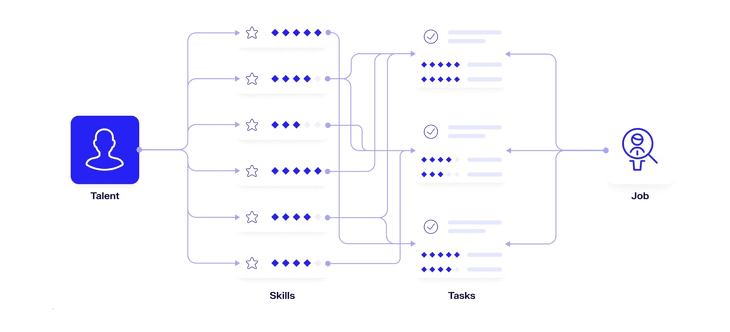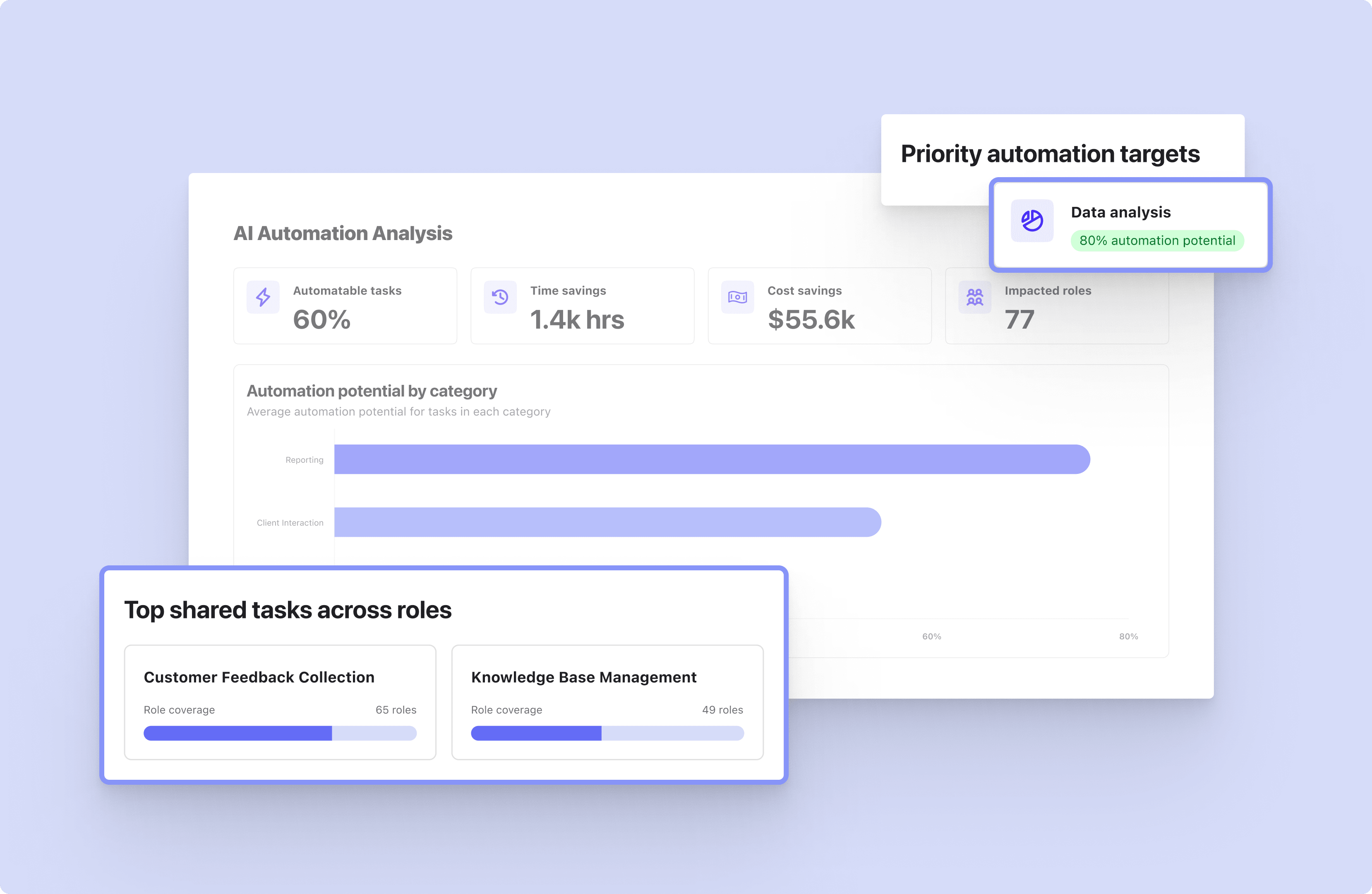AI & The Future of HR: Four Strategic Shifts Every Leader Should Prepare For
AI is fast becoming central to how organizations understand, plan, and transform their workforce. What began as experimentation with machine learning and automation has evolved into a new era of skills intelligence, generative AI, and agentic workflows that are radically changing the way work gets done.
In a recent conversation between David Perring, Chief Insights Office at Fosway Group, and Tom Shurrock, Vice President, Product at Beamery, four major takeaways emerged that every HR and business leader should consider as they navigate the accelerating future of work.
1. Workforce transformation is now a task-level challenge
Traditional workforce planning – built around static job titles and outdated skills frameworks – is no longer fit for purpose. AI is disrupting work at the level of individual tasks, not entire jobs. That means organizations need to shift their lens from job-based thinking to task-based intelligence.
Understanding what tasks make up a job, how often those tasks are performed, and how easily they can be automated gives businesses a far more precise view of where and how work is evolving. It also creates a stronger foundation for reskilling, redeploying, or redesigning roles based on real-world activity – not legacy org charts.
As Tom Shurrock put it, tasks are the building blocks of work. And to prepare for AI, you need to know exactly what work is being done – and by whom.

2. AI maturity in HR is uneven – but set to skyrocket
Awareness that AI and machine learning are foundational in HR has grown rapidly – from under 30% two years ago to nearly 40% now, with even higher numbers expected in 2025, according to Fosway Group research.
Only around 20% of organizations feel they’ve moved beyond early experimentation. However, 80% plan to expand their AI capabilities in the near term, and most believe up to half of HR tasks could be automated by 2030. The conversation has shifted from “should we use AI?” to “when and how will we use AI?”
The opportunity is enormous … but so is the gap between aspiration and execution.
The biggest barrier is not reluctance, but (a lack of) readiness. Legacy systems, data fragmentation, and infrastructure limitations are holding many HR teams back. In the meantime, forward-thinking organizations are turning to AI-native platforms that can integrate into their HCMs and deliver insight quickly – within weeks, not years.
3. HR’s strategic role is being redefined
As AI takes on more transactional work, HR is being freed to focus on what really drives impact: relationships, strategic workforce planning, and decision-making at the highest levels of the business.
The future HR function will be intelligence-led: responsible for aligning people to purpose, building culture, supporting continuous upskilling, and enabling agile, data-informed decisions across the enterprise.
But to play that role, HR teams need transparent, scalable workforce data – and the ability to turn it into action. That’s why workforce intelligence is becoming the new strategic advantage.
4. Digital twins and agentic AI will accelerate change
Beamery’s approach centres on three innovations designed to help HR navigate AI disruption:
- Task Intelligence to reveal what work is actually being done (and what can be automated)
- Digital Twin Technology to create a living model of the organization that simulates workforce scenarios and skill shifts
- Agentic AI, to make querying workforce data as simple as asking a question – no more spreadsheets or clunky reports
These capabilities allow HR to make high-quality decisions faster, model future scenarios with confidence, and even support high-stakes moments like M&A readiness or workforce restructuring.
What once required months of consulting work can now happen in a matter of weeks.

AI is not replacing HR: it’s elevating it. But only for teams that are ready to act.
HR leaders must move quickly to modernize how they understand work and skills. That means moving beyond outdated job structures, building robust task-level data, and equipping themselves with platforms that make it easier to make smart, strategic workforce decisions.
In a competitive market, the organizations that adapt first will set the pace. For everyone else, the risk isn’t just being slow – it’s being irrelevant.
See how Beamery can help you navigate disruption – and lead the way in the new era of AI-influenced workforce strategy – with our Workforce Intelligence Suite and ethical, explainable AI.